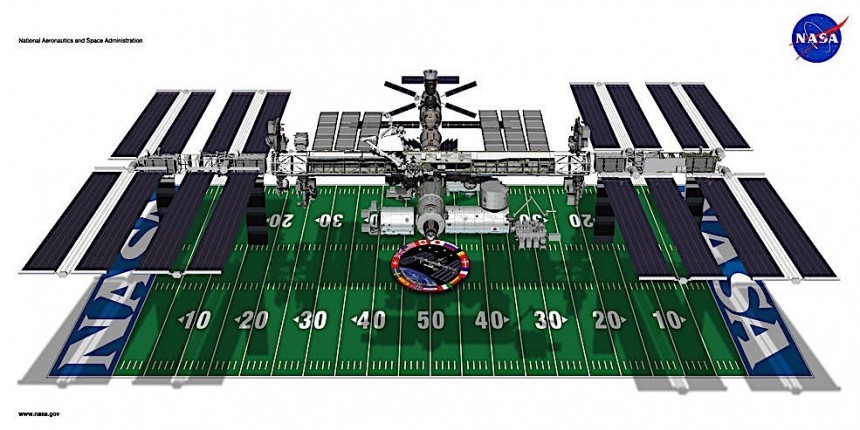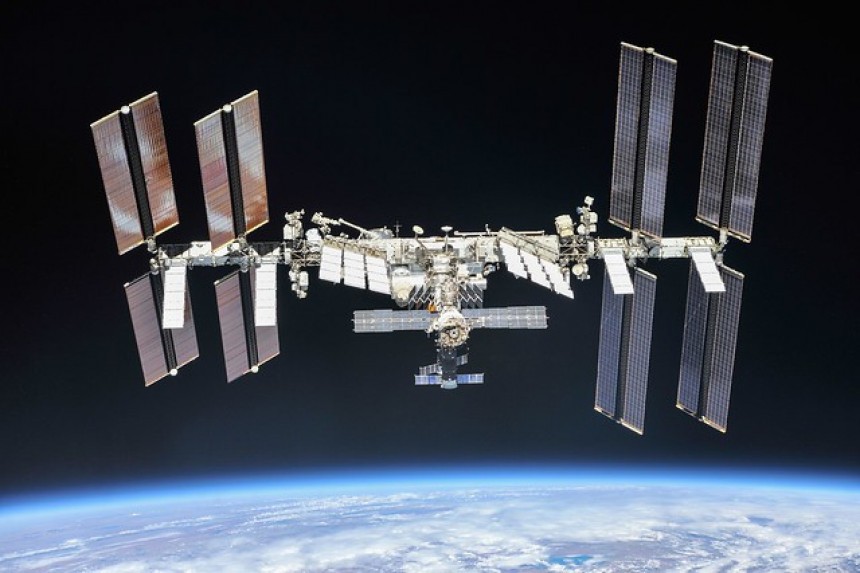Back in 1998, the first component of what was to become the International Space Station (ISS) was launched. It was not the world’s first orbital laboratory, but it certainly became the most successful one. As with all things in life, its time on the stage will eventually be up. And soon.
Over the past few years, there has been increasing chatter about the station’s ability to sustain itself in orbit. The hardware’s age is beginning to show, and a number of incidents recently that have placed a cone of shadows over its operations.
At the end of January, NASA released an updated version of the International Space Station Transition Report (available as a PDF below the text) that outlines the plans for the station, how long it will stay in orbit and, most importantly, when it will come crashing down back to Earth.
As per the info there, NASA is confident it can keep things running, safely, until the end of this decade. With the first ten years of the station’s life dedicated to assembly, and the second one to research and technology development, the third one should be the “most productive.”
It is now that the ISS is being opened to commercial missions. On March 30, for instance, the first crew of private astronauts will get there as part of the Axiom Mission 1 (Ax-1), and we’ve already had a Russian film crew last year in the nation’s segment of the station. By 2030, chances are many more missions such as these, financially lucrative, will make their way up.
But, as said, the station is getting old. Sure, hardware tasked with giving the ISS power, environmental control, life support, and communications can be repaired and upgraded in orbit, but the primary structure, comprising the modules, radiators, and trusses, continue to be affected by dynamic loading (mostly from dockings and undockings) and orbital thermal cycling, and these cannot be fixed.
As such, at the time of writing NASA has no plans of keeping ISS up and running past 2030. In fact, the updated plans calls for the final crew to leave the station that year, and in 2031 the station to be de-orbited. That’s the official term used by NASA to describe the deliberate crashing of orbiting hardware into Earth’s atmosphere.
The decay of the ISS orbit is expected to begin sometime in October 2026, when it will start lowering its operational altitude, falling toward the planet from the present height of around 420 km (261 miles), until it hits the point of no return (the altitude from which the station can no longer be recovered) in September 2030, and zero altitude in January 2031.
The station will thus be pushed gently out of its place among the stars, but its final moments will be the most dramatic. NASA will use both ISS' own propulsion means, and visiting spacecraft to bring it down.
Three Russian Progress spaceships, and possibly even some Northrop Grumman Cygnus ones, will be used for the task at hand. De-orbiting will not begin until all maneuvers “to line up the final target ground track and debris footprint,” had been performed.
Like most other orbital hardware that was crashed into Earth, scientists will do all the math they need to make sure the ISS remnants will fall in a remote region of the Pacific Ocean called Point Nemo. NASA officially dubs the location South Pacific Oceanic Uninhabited Area (SPOUA), and we’re talking about a place 2,688 km (1,670 miles) from the nearest landmass.
That’s the same location where the Russian-built Mir, the largest spacecraft ever to reenter the Earth's atmosphere, crashed in 2001. If that’s any reference, it’s worth pointing out that despite the careful planning and high-mathematics used to de-orbit it, Mir left a debris trail 1,500 km (930 miles) long.
For purposes of visualization, the video below, put together by space animation specialist Hazegrayart, shows a simulation of how the entry and break-up of the ISS could happen.
At the end of January, NASA released an updated version of the International Space Station Transition Report (available as a PDF below the text) that outlines the plans for the station, how long it will stay in orbit and, most importantly, when it will come crashing down back to Earth.
As per the info there, NASA is confident it can keep things running, safely, until the end of this decade. With the first ten years of the station’s life dedicated to assembly, and the second one to research and technology development, the third one should be the “most productive.”
It is now that the ISS is being opened to commercial missions. On March 30, for instance, the first crew of private astronauts will get there as part of the Axiom Mission 1 (Ax-1), and we’ve already had a Russian film crew last year in the nation’s segment of the station. By 2030, chances are many more missions such as these, financially lucrative, will make their way up.
As such, at the time of writing NASA has no plans of keeping ISS up and running past 2030. In fact, the updated plans calls for the final crew to leave the station that year, and in 2031 the station to be de-orbited. That’s the official term used by NASA to describe the deliberate crashing of orbiting hardware into Earth’s atmosphere.
The decay of the ISS orbit is expected to begin sometime in October 2026, when it will start lowering its operational altitude, falling toward the planet from the present height of around 420 km (261 miles), until it hits the point of no return (the altitude from which the station can no longer be recovered) in September 2030, and zero altitude in January 2031.
The station will thus be pushed gently out of its place among the stars, but its final moments will be the most dramatic. NASA will use both ISS' own propulsion means, and visiting spacecraft to bring it down.
Like most other orbital hardware that was crashed into Earth, scientists will do all the math they need to make sure the ISS remnants will fall in a remote region of the Pacific Ocean called Point Nemo. NASA officially dubs the location South Pacific Oceanic Uninhabited Area (SPOUA), and we’re talking about a place 2,688 km (1,670 miles) from the nearest landmass.
That’s the same location where the Russian-built Mir, the largest spacecraft ever to reenter the Earth's atmosphere, crashed in 2001. If that’s any reference, it’s worth pointing out that despite the careful planning and high-mathematics used to de-orbit it, Mir left a debris trail 1,500 km (930 miles) long.
For purposes of visualization, the video below, put together by space animation specialist Hazegrayart, shows a simulation of how the entry and break-up of the ISS could happen.














